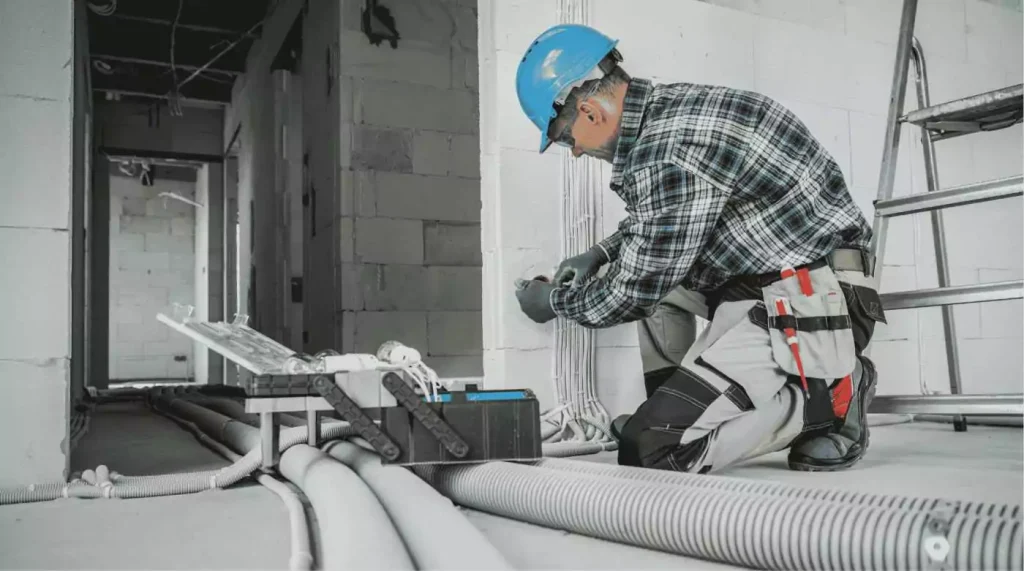In today’s fast-paced world, ensuring the longevity and efficiency of your equipment and facilities is vital. Old and traditional House maintenance practices have often been associated with repairing equipment after it breaks down. However, the true essence of maintenance is to preserve and protect equipment from failure. In this article, we will explore the significance of maintenance, its different phases, and the various approaches to it. We will also delve into the advantages and disadvantages of corrective, preventive, and predictive maintenance strategies.

Understanding House Maintenance
House Maintenance, at its core, is the proactive process of preventing equipment or facilities from failing. It involves a series of actions taken to maintain them in optimal working condition. It’s not merely about fixing issues after they occur but rather about ensuring that they don’t happen in the first place. Unfortunately, many businesses, both in the private and public sectors, tend to neglect the importance of investing in adequate House maintenance resources, opting to act only when equipment breaks down. This reactive approach is not only costly but also inefficient.
Extending the Lifecycle
Every piece of equipment has a finite lifecycle. For example, a piece of machinery may be designed to last for 5,000 hours, but with proper use and House maintenance, its lifespan can be extended to 10,000 hours. The need for House maintenance arises when there’s an actual or impending failure. Ideally, maintenance should be performed to keep equipment and systems running efficiently throughout their typical lifecycle. In practical terms, equipment efficiency is closely tied to time.
The Bathtub Curve
If we were to graph the failure rate of equipment over time, it often resembles a bathtub curve. In this curve, the Y-axis represents the failure rate, while the X-axis represents time. This curve can be divided into three distinct periods: premature failure, the lifecycle, and the exhaustion period.
1. Premature Failure
The premature failure period is characterized by a high failure rate, which is often linked to design flaws, incorrect installation, or improper usage. Preventive House maintenance practices play a significant role in reducing failures during this period.
2. Lifecycle
The lifecycle period is marked by a relatively constant failure rate. While the exact reasons for equipment failures during this time vary, it is generally agreed that poor preventive House maintenance practices can be a key contributing factor. Incorporating predictive and preventive maintenance measures can help extend this phase.
3. Exhaustion Period
The exhaustion period witnessed a rising failure rate. Failures during this time tend to occur more regularly, often leading to the end of the equipment’s design life.
The Necessity of Periodical Maintenance
Most equipment requires regular maintenance. Think of a car; it needs filter changes, alignment adjustments, oil changes, and proper lubrication. Some components may need replacement, such as the timing belt, to ensure the car’s continued functioning after its design life has ended. Neglecting planned maintenance activities shortens the equipment’s operational lifecycle.
Proactive Maintenance Strategies
In the last few decades, maintenance approaches have evolved to focus on proactivity. Preventive maintenance, coupled with predictive maintenance, has become the norm to ensure that equipment reaches or surpasses its design life.
Exploring Maintenance Approaches
Now, let’s examine the advantages and disadvantages of different types of maintenance:
Corrective Maintenance
Advantages:
- Low cost
- Requires fewer workers
Disadvantages:
- Costs increase due to unplanned equipment stops
- Labor costs rise, especially during extended downtime
- Extra costs associated with equipment repair or replacement
- Secondary equipment can suffer damage during primary equipment failure
- Inefficient use of human resources
Preventive Maintenance
Advantages:
- Reduced inactivity time, leading to increased equipment availability
- Maintenance regularity offers better flexibility
- Extends the components’ lifecycle
- Promotes energy savings
- Decreases failure rates
- Cost reduction of approximately 12-18% compared to corrective maintenance
Disadvantages:
- Still, a possibility of failure
- Requires intensive workforce
- May include activities that are not entirely necessary but recommended
- Some unnecessary activities could accidentally cause damage to other components
Predictive Maintenance
Advantages:
- Enhances components’ availability and lifespan
- Reduces equipment inactivity time
- Lowers materials and labor costs
- Boosts employee morale
- Cost reduction of around 8-12% compared to preventive maintenance
Disadvantages:
- Initial investment in diagnostic equipment can be significant
- Increased investment in personnel training
- Potential savings may not be immediately apparent to senior management
- Significant savings are typically only realized in the long term
In conclusion, maintenance is the cornerstone of ensuring the efficiency and longevity of your equipment and facilities. It is not a matter of if, but when equipment will require attention. Choosing the right maintenance approach, whether corrective, preventive, or predictive, can make a substantial difference in terms of cost savings and operational efficiency. Embracing proactive maintenance strategies can lead to longer equipment lifecycles and a smoother operational experience.




